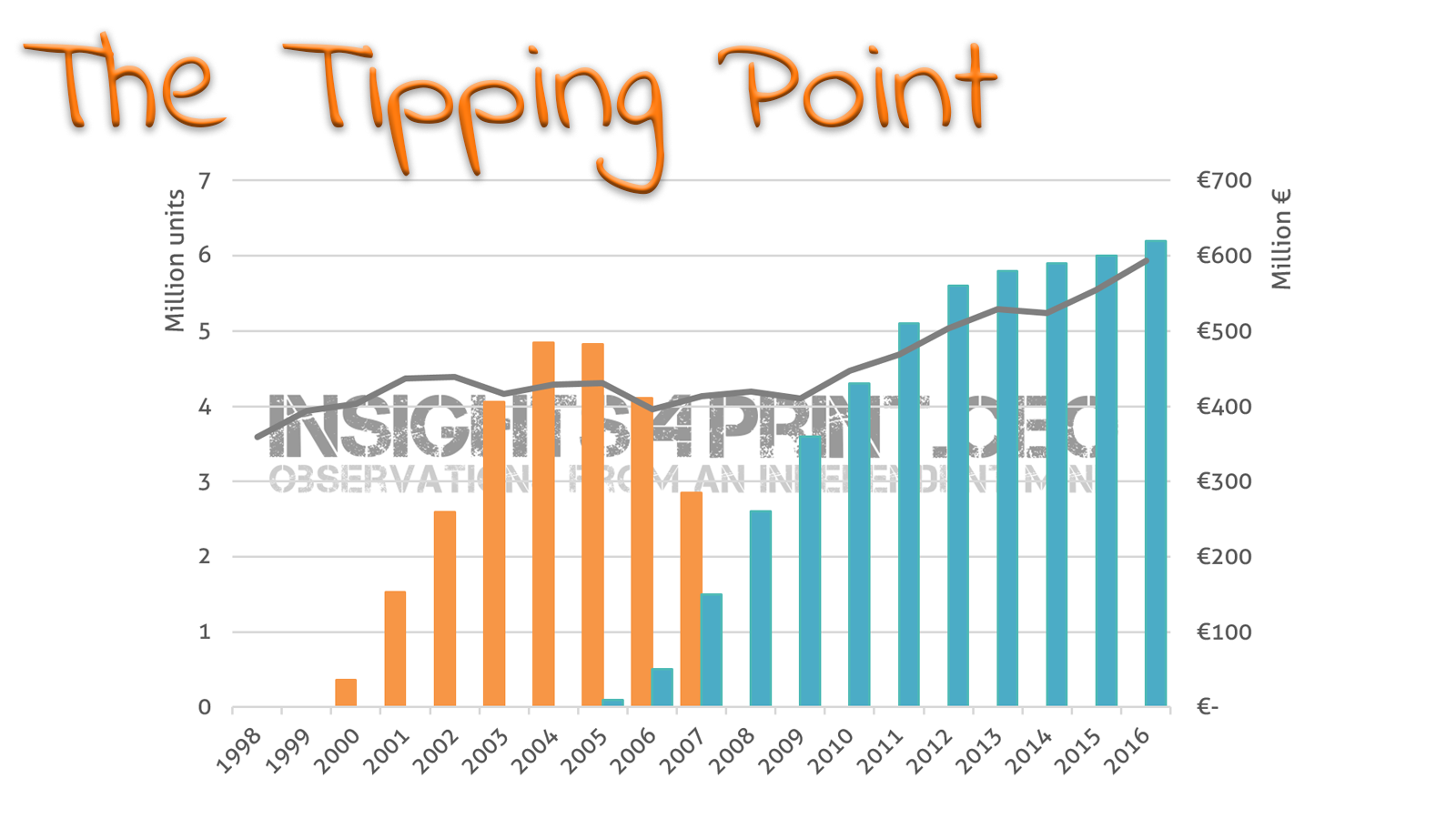
The first person who bought a fax machine was an idiot. That may sound a bit hard, but think about it: a fax machine is a communication device, which means you need both a sender and a receiver to be able to use it. Being the very first and only one, there was no way to use it…
CONTENTS: The fight to become the standard | Examples from the printing industry | Killer feature: JPEG | Economic aspect: inkjet | The Netflix Story | The CEWE Story | Why is this important?
Of course the reality of the introduction of the fax machine showed more nuances. Probably a lot of companies bought multiple device, to connect different offices. But the main idea however is true: to be successful with a new product, you need a minimal market share, a minimal critical mass. And that is the idea behind ‘the tipping point’. Once you reach that critical mass, you can ‘t be stopped. And that shows in the example of the fax machine: in 1984 the first low priced fax machines sold 80.000 copies in the US. The following years there was a slow growth until 1987 when the critical mass was reached and having a fax device started to make sense for most business, eventually even becoming a necessity: not having a fax machine would mean losing customers. In 1987 one million fax machines were sold in the US, by 1989 two million new machines had joined the ever growing fax network.
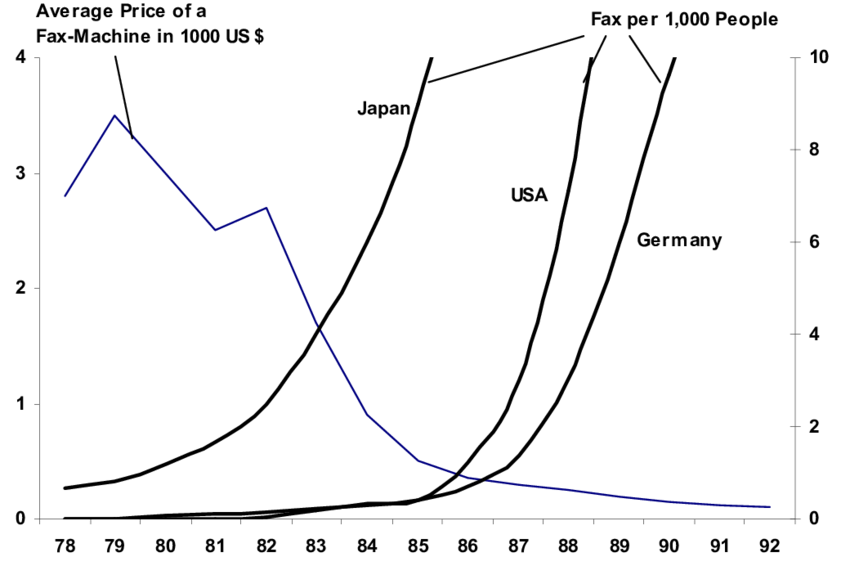
The concept of ‘The Tipping Point’ became widespread thanks to the excellent book by Malcolm Gladwell (most of his books are excellent btw). In that book he describes – in an entertaining way – the logic behind this and which factors can play a role. I can really recommend it!
The fight to become the standard
But let’s focus on technological innovations. A great example of the tipping point is the fight to become the standard. The classroom example is the first wave of personal video recorders, which in those days used tapes. In the early days there was a battle between VCR (the oldest personal video cassettes), VHS and Betamax (improvements of VCR). Being slightly newer VHS and Betamax had technical advantages over VCR, with Betamax being the most advanced. But it didn’t become the standard. VHS gained a larger market share, reaching a critical mass. Content providers (film studios) decided at that moment to only support VHS in the future (Betamax did live on in the more professional video recording business, thanks to the higher quality). The reason for the larger market share and eventually reaching that tipping point where VHS became the de facto standard is a specific kind of infamous content: adult movies…
The same fight was repeated a decade ago with high definition video recording: Blu-Ray versus HD-DVD.
Examples from the printing industry
A nice example from the printing industry is PDF (Portable Document Format). The file format was introduced in 1993. At that moment there were several competing technologies, one of them being DjVu. In those days both the software to create PDF documents and the reader software had to be purchased. It was only when Adobe launched the free Adobe Reader software (version 3 if I’m not mistaken) that the use of PDF really started to take off. That was the trick to get to the tipping point, the trick to become ubiquitous. And the de facto standard.
In 2006 Microsoft tried to launch a competing file format: XPS (XML Paper Specification). The reader was also free and you could create an XPS file from Microsoft Office applications (if I recall correctly). But PDF already had such a gigantic market share and XPS didn’t have a ‘killer feature’ to make people switch. I have never received an XPS file in my life, except the few demo files from XPS software companies.
Killer feature: JPEG
And in an existing market, that killer feature in a new solution is extremely important. Just look at image file formats. You probably store your holiday pictures in JPEG format, right? JPEG has been around for ages: since 1992. Due to restrictions in computing power and storage in that age, some specific choices were made, e.g. the kind of compression used to minimize file sizes. The 8×8 blocks are infamous… With the current computing power and storage available, other choices would make more sense. Both in terms of quality and in terms of (lower) file size. And that’s what we have seen many times over the last decade: newer file formats that are (much) better than JPEG.
JPEG2000 e.g., which is an evolution designed by the same ‘Joint Photographic Expert Group’. But it didn’t take off, due to the limited advantages – at least in the eyes of the average user. The JPEG group also released JPEG XR (extended range), but I haven’t seen that one in real life yet. Also other competing technologies have been proposed: WebP (by Google), Better Portable Graphics, High Efficiencey Image File Format. But even 25 years after its conception, JPEG still rules.
HEIF might become an interesting case: this is the file format that will be used in Mac OS High Sierra and iOS 11. Could this push by Apple create a tipping point for HEIF? Will it be able to overtake JPEG? It might. But don’t forget: we are creatures of habit… And it will take a significant amount of energy to create a change.
Economic aspect: inkjet
The fight to become the standard is only one aspect of the tipping point. There is also the economic aspect, the price issue. And the most interesting example here is inkjet. And I mean production inkjet, not the desktop printer. You need a certain batch size to be able to economically produce inks and optimized paper for inkjet (certainly high speed inkjet). And that’s what the early adopters run into: high consumable prices. It is only when the market size (e.g. number of installments, volume printed) grows, that consumables become cheaper. And cheaper consumables mean that more companies are looking into that technology and are investing in that technology. It happened with toner based digital printing, it is now happening with high speed inkjet.
These are just a number of examples, I could go on and on… E.g. about the early days of computer-to-plate. Or even the ‘green’ films for prepress that were all around at drupa 1995 (yes, I’m that old… ? ).
And also outside the printing industry we see this, at this very moment the use of electric cars might be at a tipping point. Thanks to cheaper offerings, but also thanks to larger autonomy of current models and a (sufficient) number of loading stations. That’s what will create the tipping point. And that’s what should be on top of mind of management: when will a certain technology reach the tipping point? What are the conditions to reach that tipping point?
The Netflix story
Netflix is a nice example of a company that did this. We now know Netflix as an internet enabled provider of entertainment. But they didn’t start that way. They started as a DVD sales and rental company in 1997, ditching the ‘sales’ part and focusing on DVD rentals by mail quite fast. And they did that in an excellent way, with a great user experience. But then broadband internet started to take off, which allowed streaming of movies. So in 2007 they expanded their services with media streaming, which also allowed a geographic expansion, making them a worldwide player… Now their focus is ‘internet TV’, which will, one day, replace ‘linear TV’. According to their crystal ball, that is.
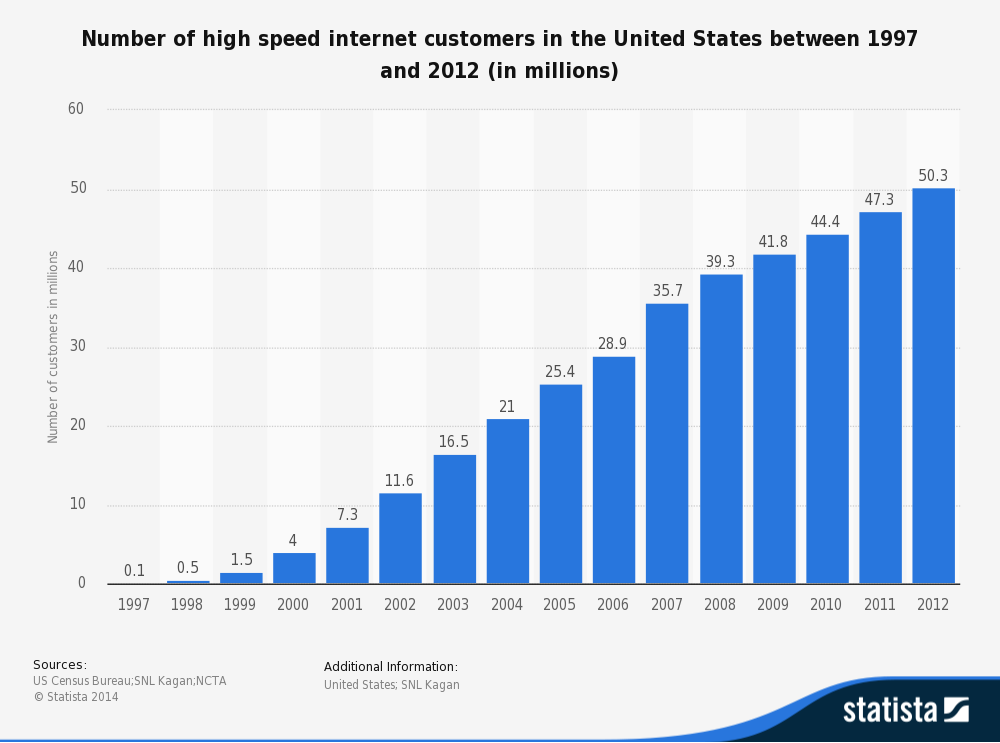
The CEWE story
A bit closer to the printing industry is CEWE in Germany. By origins a photo finishing company, they started to see the shift towards digital sharing of pictures and digital photography. Already in 2000 they started with a first digital service: scanning negatives and putting them on to a cd. At that time, more and more people had access to a computer and to the internet, providing a platform for digital photo sharing. When dropping your film in the photo shop, it was just an extra option that was presented to you. And one that made sense. I started using that service in 2001 and I was immediately convinced, the price was reasonable, the added value was great.
But things can change quite fast and a few years later digital photography started to take off. And CEWE followed the trend. Not only with regular prints of digital photos, but also with the creation of photobooks. Which compensated for the loss in analogue photos. And some years later, they started offering other print products. Which makes sense: they already had experience with both customer facing front ends and with digital printing.
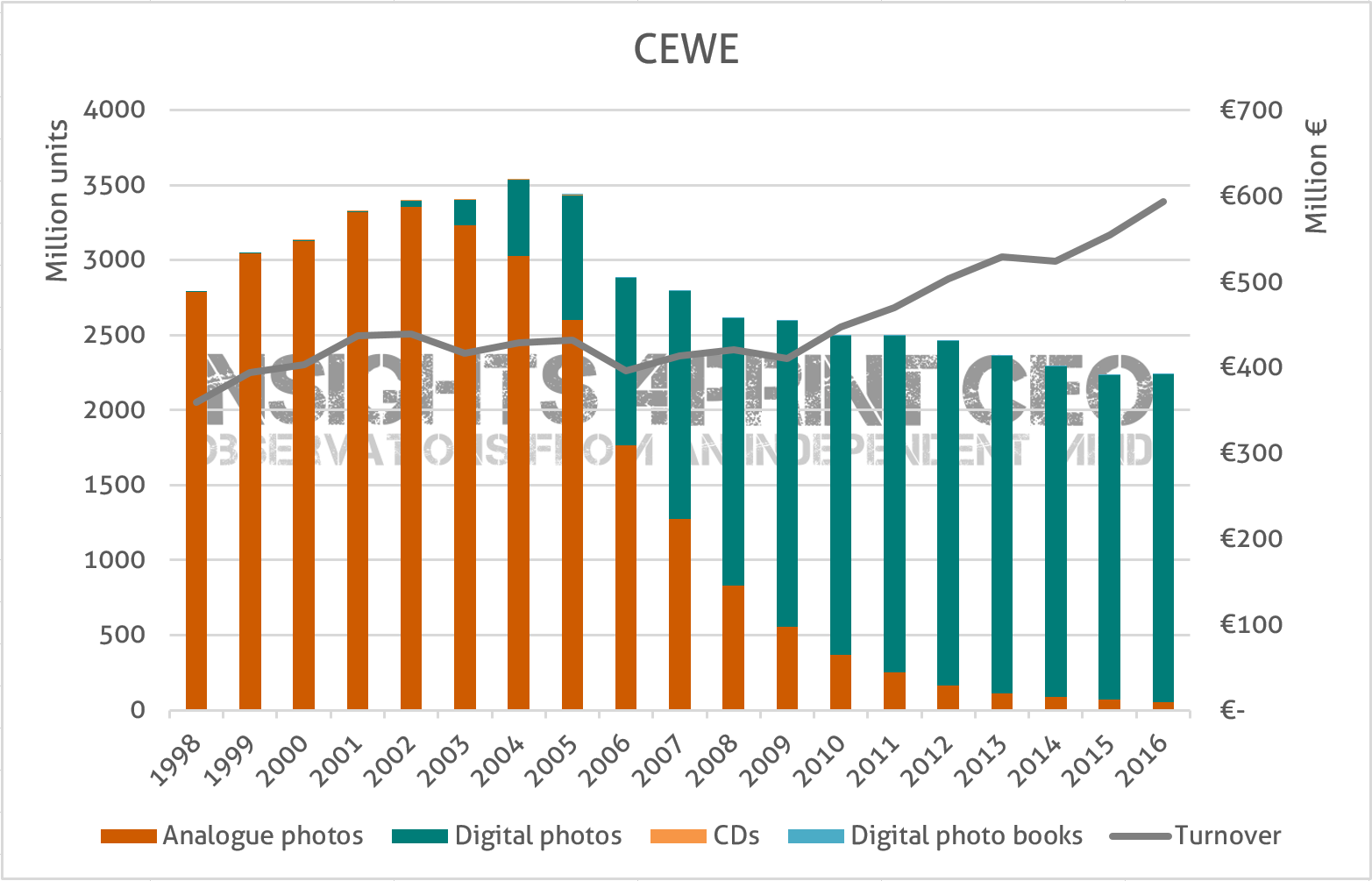
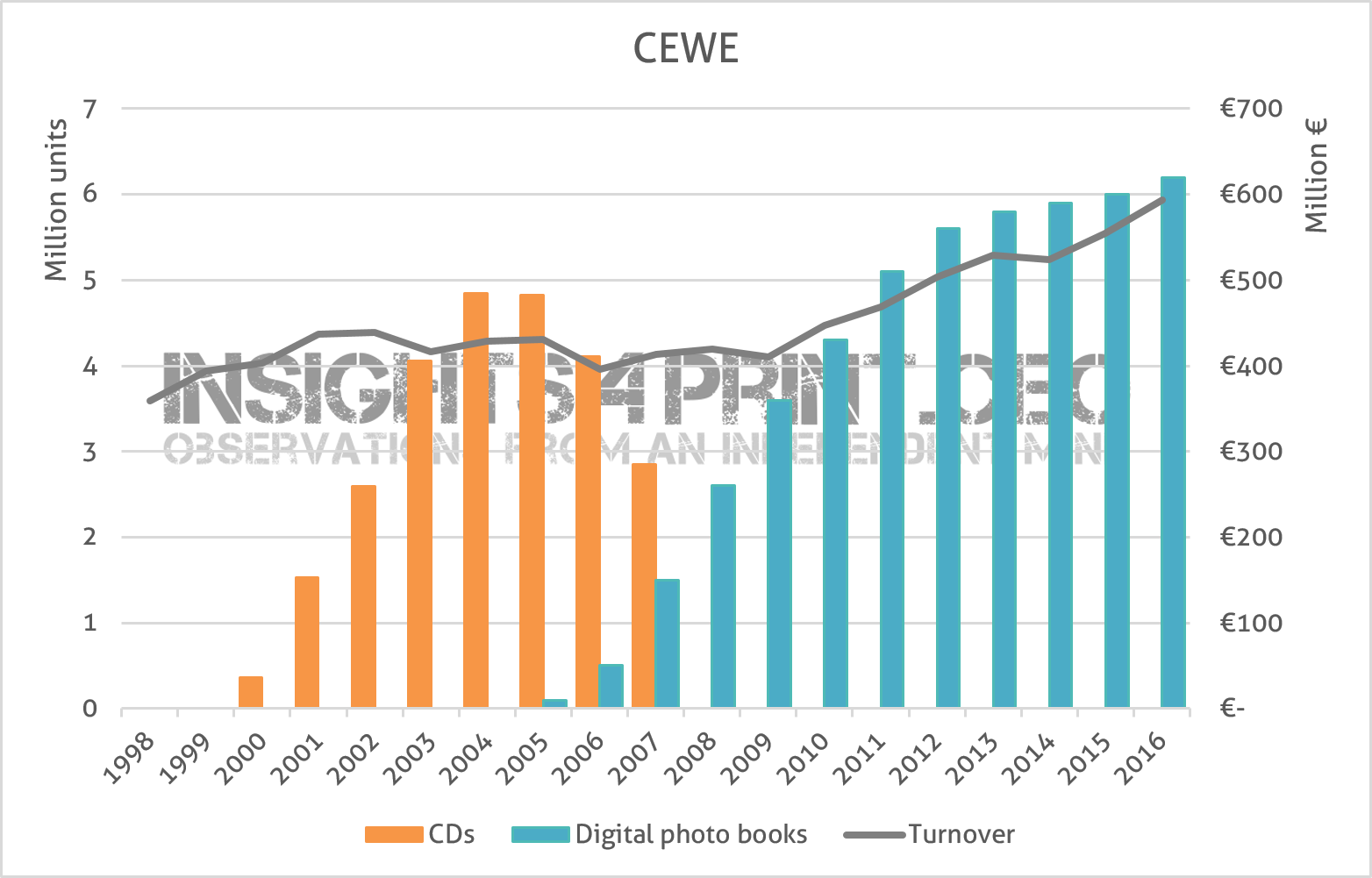
Why is this important?
When creating a new technology, when jumping on the bandwagon of a new technology, you need to take into account the tipping point. From a manufacturers point of view: you will need to create everything necessary to be able to get to that tipping point and become the de facto standard. That’s what Adobe did with the release of the free Adobe Reader.
From a user perspective, you need to make sure that the system you invest in will still be supported in the near and in the longer future. Investing in a technology that will not take off, is expensive. So you have to make informed decisions. And it’s not because you read an article on the internet with a strong statement that X will kill A, that this will become reality (e.g. WebP will kill JPEG). This is a discussion with lots of different points of view, lots of different aspects. You need to take it serious, you need to be well informed. I can help you with that, I’m an independent mind. Drop me an email!
PS: do you know when the principle of the fax machine was patented? And when the first commercial operation began? Much earlier than you think… The first patent dates from 1843, the first commercial operation began in 1863, the first commercial ‘wirephoto system’ was launched in 1925… The complete timeline can be found at the end of this article.


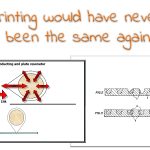


Be the first to comment